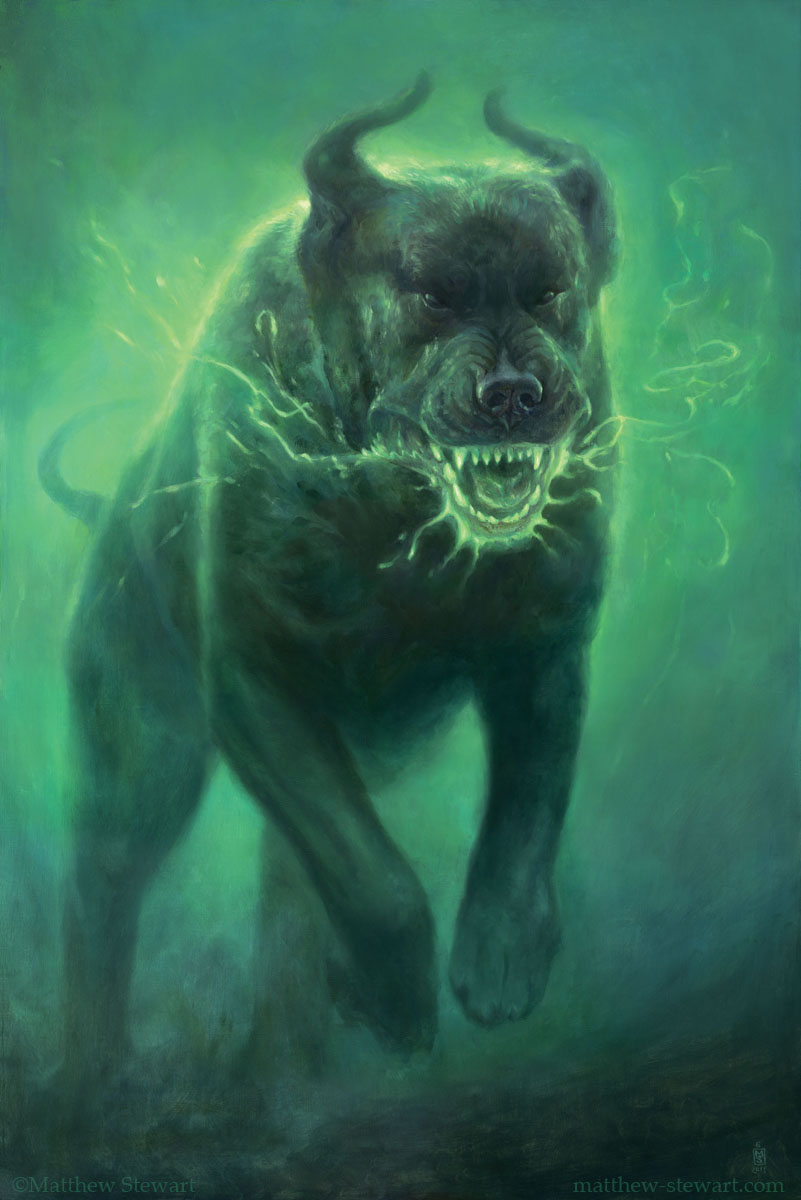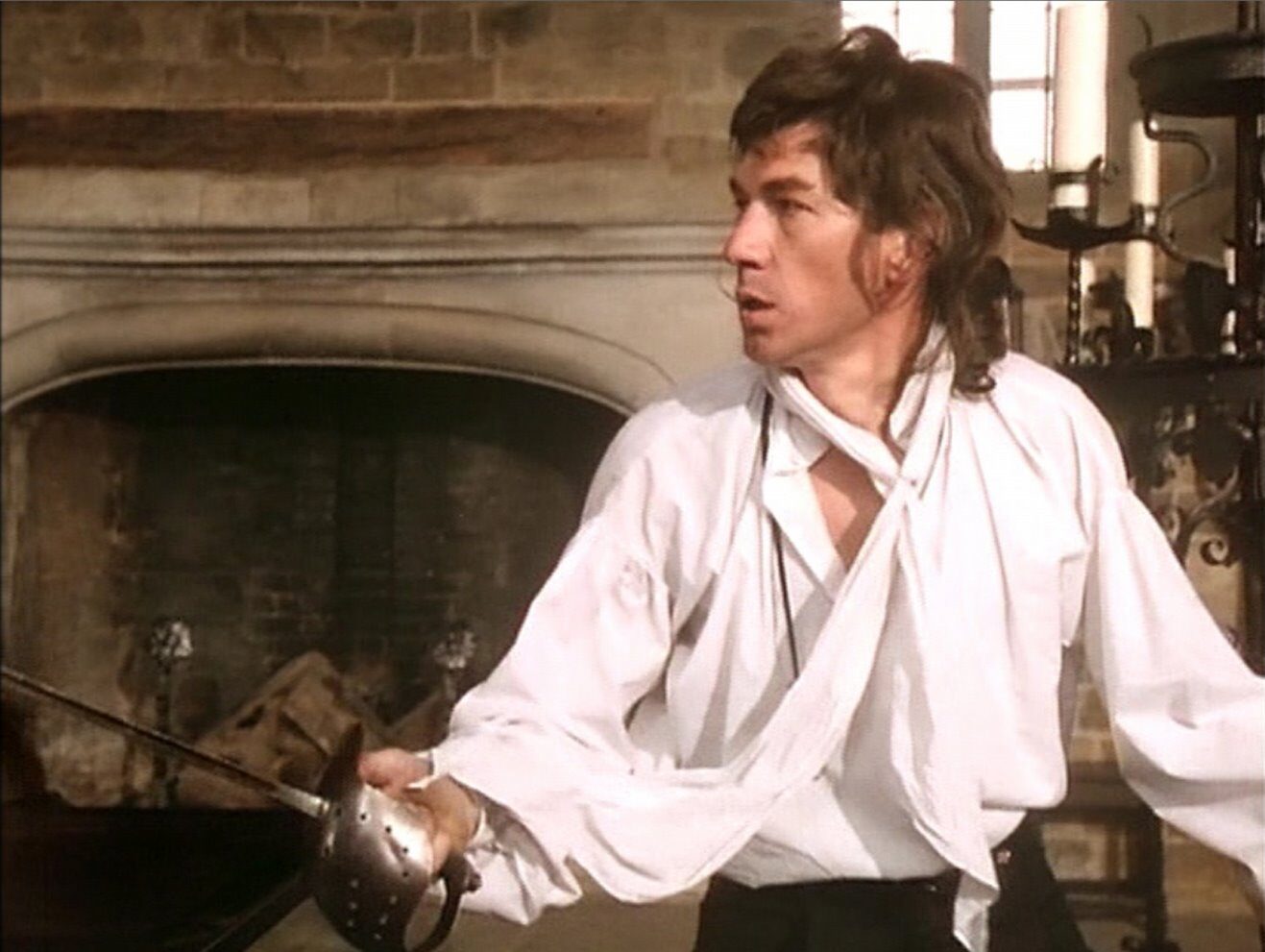The Hound of the Baskervilles
Arthur Conan Doyle
1902
(The scientific minds of Holmes and Watson are tested by howls on the moor, the legend of a fiery hell-hound, and a giant pawprint next to a dead nobleman.)

A novel-length Sherlock Holmes mystery! The readers of the Strand Magazine must have been delighted. They must have vigorously discussed with each other the prospects of the case between installments. Releasing a detective story by degrees has got to be risky, since the readers have so much time to figure everything out. There are enough threads interwoven in this story, though, and enough minor details that must be incorporated into a solution, that I suspect almost everyone will be surprised at something in the denouement. Besides, we would need a healthy dose of luck to solve the riddle ourselves, for there are crucial elements about which we can only guess during the narration. These are revealed to us only after Holmes has discovered them and solved the case in his mind. In this way, Doyle all but ensures that competition with the sleuth is beyond our grasp.
Although the most haunting aspect of the typical Sherlock Holmes case is nothing more than the dense fog of pipe smoke around the detective’s chair, Doyle did have an interest in spiritualism, and wrote a few books on the subject. In The Hound of the Baskervilles he combines these two interests by infusing the tale with a strong atmosphere of macabre otherworldliness. Probably more than the facts of the case or its solution, the damp darkness and chilling moans of the moor are likely to remain with us long after we have finished reading the book.
Cimarron
Edna Ferber
1930
(The Oklahoma land rush of 1889 gives Yancey Cravat an opportunity to rescue his wife from civilized mediocrity, and head west for the untamed life of the pioneer.)

Yancey Cravat is the Cimarron—the wild one, like an aimless river or a jousting bighorn sheep. He may tote legal volumes as easily as a gun, and be as quick with a Shakespeare quote as with a trigger; and yes, he’s a lawyer and the editor of a socially active newspaper… but this is no milktoast city boy. This is Buffalo-Head, the tall, gruff, steel-eyed pioneer for whom three years in the same place or a single day without some sort of risk or conflict is evidently his idea of hell. And, no doubt, the wife of such a one is bound to be some kind of woman: Sabra, a sharp, spirited, strong, self-sufficient saber of a woman. In fact, although most assessments of this book will tell you that its permanence lies in its presentation to the world of the unforgettable Yancey Cravat, who is it that ties the book together? Whom does the narrative follow, when Yancey’s itchy traveling bone takes him to Alaska or the Spanish-American war? Not him, but the determined, toiling Sabra. Granted, she lacks the explosive flash of her husband–her way is much too pragmatic to put her in much danger or make her many enemies. But she is really the central character of the book, the one who grows, the one who succeeds in adapting herself to the various jolting cultural shifts that get thrown into her path by the errant Yancey, or by her son, or by the discovery of oil. At first entry into the fledgling land rush town of Osage, Oklahoma, fresh from the overprotection of her family the proper Venables of Wichita, she breaks into sobs when kissed by a stranger on the street. But give her eight or nine years, and she’s riding in the middle of the night into an Indian reservation during a mescal ceremony and demanding that her unconscious son be thrown onto her cart so she can bring him home. But of course, yes, we do want to hear about Yancey, despite… or maybe partly because of… his refusal to stick around. He’s idealistic, imposing, and indomitable. Take one particular tent meeting, for instance: in the course of giving a sermon, he manages to work in a self-defense killing—yes, the actual killing, not the story of a killing. And when warned that his pro-Indian editorials are going to get him killed, his reply is simply the unearthly death-scream of the Cherokee. (more…)
The Scarlet Pimpernel
Emmuska Orczy
1905
(A master of disguise rescues French aristocrats from the guillotine and drops them safely into London society—until a sly French inspector tracks him down.)

Don’t let the title’s reference to a dainty flower and the femininity of the author fool you. This is no Austen or Brontë novel. It is a hearty adventure, more along the lines of the father of adventure stories Sir Walter Scott, or Dumas, or Stevenson. What a treat to have a woman join these illustrious ranks! Rugged oaths and swordfights may be lacking, but stories stocked with those can easily be found elsewhere. Instead Orczy proficiently places a “caped avenger”-style suspense drama (a genre some say she invented) against a backdrop of fashionable London society. The high manners, the social competition, the gossip, the dress, the flamboyant events… Orczy was a baroness herself, and this is undoubtedly part of the reason why she was able to present these ingredients with such freshness and authenticity. But all this is ancillary to the mystery and excitement that lend this tale its permanent appeal.
A Sand County Almanac
Aldo Leopold
1948
(An ecologist contemplates and celebrates the land, and recommends an expansion of our moral world.)

In today’s courses on ecology, forestry, conservation, environmental philosophy or land use, three personalities are routinely introduced as the fathers of modern concern for nature, the three who first and most strongly urged us to enlarge our conception of what in this world is a proper object of moral consideration: Henry David Thoreau, John Muir, and Aldo Leopold. Contemporary American (and to some extent world) culture has been impacted by A Sand County Almanac, as by Thoreau’s Walden, to such an extent that we cannot yet begin to assess it. Nevertheless, I would argue that we as a culture have still not attended to the two main lessons A Sand County Almanac would teach us.



Breakfast of Champions
December 15, 2014 / Leave a comment
Kurt Vonnegut, Jr.
1973
(Little do a frustrated writer and a troubled car dealer realize, that their impolite author is using their journey to meet each other as an excuse to mastermind a deconstruction of modern values!)
Sort of The Temptation of St. Anthony, sort of by Rabo Karabekian, 1950. Sort of Sateen Dura-Luxe acrylic wall paint and day-glo tape. 20 x 16 feet. This can sort of be seen in the Midland City Art Gallery, to which it was sort of sold by the artist for $50,000.
A Vonnegut novel grows on you… like an exquisite acquired taste… or else a nagging corn on the foot. All three experiences are underestimated at first, and with time a realization dawns that there is something here that cannot be ignored. Some deride Breakfast of Champions as one of his “lesser”, although more popular, novels. For my part, I think that here we have a wine that is initially very peculiar on the palate, and its apparent confusion will conceal the vibrant undertones if one is not careful to taste it slowly and carefully. Or else, here we have a blasted gadfly of a corn that starts insidiously in a part of the foot’s ball that is unlikely to feel it until the thing has incubated for a mighty long time, insinuating deeply into one’s tissues. And when finally noticed, ouch does that root go deep!
(more…)